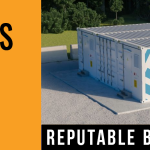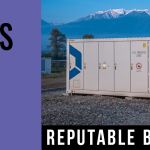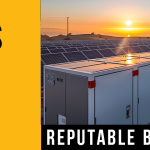 The idea is simple. A team headed by Franz Georg Pikl, a Ph.D. student at the Institute of Hydraulic Engineering and Water Resources Management at TU Graz, has combined the advantages of pumped storage technology and heat storage using water as a medium to create a “hot-water pumped storage hydropower plant.” The new system stores and supplies electricity, heat and cooling energy as required.
The idea is simple. A team headed by Franz Georg Pikl, a Ph.D. student at the Institute of Hydraulic Engineering and Water Resources Management at TU Graz, has combined the advantages of pumped storage technology and heat storage using water as a medium to create a “hot-water pumped storage hydropower plant.” The new system stores and supplies electricity, heat and cooling energy as required.
The first element is pumped storage hydropower, a technology that has been steadily refined over the past 100-plus years. It is currently the most reliable, efficient and durable form of electricity storage. Pumped storage hydropower schemes are mainly found in mountainous countries, as they require a difference in elevation between two reservoirs, as well as sufficient amounts of water. When large volumes of power are generated, the excess electricity is used to pump the water from the lower reservoir to the higher one. If electricity demand increases, the water flows back down and drives turbines that in turn generate power. Pikl has implemented this principle completely underground. Subterranean tunnels are used to create the difference in elevation between the two underground reservoirs needed to produce electricity, regardless of the topography. This minimises the area required, and simplifies both the process of finding a location as well as the mandatory approval procedure.
Heat accumulators, where the thermal energy is stored, form the second component of the new storage concept. Thanks to its high specific heat capacity, water serves as an additional thermal energy storage medium for the underground pumped storage power plant. Renewable energy is used to heat the water to up to 90°C. Thermal energy is stored and used by means of heat exchangers installed in the underground reservoirs. When demand for heat is high, it can be supplied directly to consumers via district heating transmission lines.
Franz Georg Pikl also integrated district cooling technology into the concept – this method of cooling buildings is becoming increasingly significant – in the shape of absorption chillers. When required – in other words, on warm days – the hot water drives the chillers, which produce cooling energy that is distributed to customers along district cooling transmission lines. To ensure a constant supply of cooling energy to various temperature zones, this system can be modified by cooling the water of the underground pumped storage hydropower scheme – which could then be labelled a “cold-water pumped storage hydropower plant.”
read more
 Europe’s largest industrial
Europe’s largest industrial  The U.S. residential energy storage market
The U.S. residential energy storage market  Researchers in Akron, Ohio, are filling silos with sand in hopes it might lead to the next breakthrough in energy storage.
Researchers in Akron, Ohio, are filling silos with sand in hopes it might lead to the next breakthrough in energy storage. French power giant EDF has acquired a 50% stake in the Togo-focused unit of off-grid renewable energy specialist BBOXX, with EDF adding its financial clout to speed up solar home system deployments and its technical expertise to improve the energy storage offering.
French power giant EDF has acquired a 50% stake in the Togo-focused unit of off-grid renewable energy specialist BBOXX, with EDF adding its financial clout to speed up solar home system deployments and its technical expertise to improve the energy storage offering. CMI Energy, part of Cockerill Maintenance & Ingénierie (CMI) Group, has opened an industrial energy storage facility called the Micro Réseau Intégré Seraing (MiRIS) in Seraing, Belgium.
CMI Energy, part of Cockerill Maintenance & Ingénierie (CMI) Group, has opened an industrial energy storage facility called the Micro Réseau Intégré Seraing (MiRIS) in Seraing, Belgium. SERAING, Belgium — CMI Energy, part of
SERAING, Belgium — CMI Energy, part of  A new-build school in the northern coastal suburbs of Perth, Western Australia, has become the first in Australia to be powered 100 per cent by rooftop solar and battery storage.
A new-build school in the northern coastal suburbs of Perth, Western Australia, has become the first in Australia to be powered 100 per cent by rooftop solar and battery storage.



